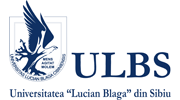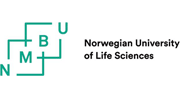Dioxins
Known as: TCDD, Seveso dioxin, PCDD
What are they? Dioxins are a class of organic substances with a benzene type molecule that contains two atoms of oxygen inserted in the aromatic cycle. 210 dioxin-like chemicals are known, among these around 30 are extremely toxic, the most toxic being 2,3,7,8-tetrachlorodibenzo-p-dioxin or TCDD, also known as the Seveso dioxin. These are among the most toxic molecules known to man. They are related, in terms of toxicity and behaviour inside the living organisms, with the PCB and with the polychlorinated dibenzofurans (PCDF).
Use (purpose): Dioxins do not have a final use, being involuntary emissions resulting from plastic incineration in all its forms, furniture waste, pesticide contaminated agricultural waste, expired fertilizers and pesticides.
- They are residual sub-products from pesticide production.
- They are issued during nonferrous metals extraction (smelting).
- They are issued during paper paste chlorine bleaching.
Some dioxin-type molecules are issued during burning vegetation and during volcanic eruptions. Dioxins are particularly persistent in the environment, accumulating at high rates in the living organisms. Due to their persistence, dioxins are transported by the environmental agents and migratory fauna even in the Arctic, being found in high concentrations in the local non-industrial populations.
Present status: Starting with 2001, the Stockholm Convention classifies dioxins as some of the most dangerous persistent organic pollutants (the dirty dozen). In order to reduce the produced dioxin quantity the international papers recommend to replace the existing techniques of waste elimination with more modern ones, make mandatory the use of activated carbon filters for dioxin absorption from the flue gases in the cogeneration facilities and the ban of burning plastic in the open or in improvised heating or homemade fuel production facilities.
In Romania: Due to the lack of education regarding the environmental protection and health in the general population, many people residing in the rural environment as well as from the urban environment using domestic wood, heating oil, sawdust or coal burning heating plants, are burning in the stove domestic plastic waste. The gases and fumes emanating from the heating plant are settling on the surrounding vegetation, in the localities and their surroundings, dioxins thus becoming an integral part of the breathing air, the consumed food, especially through eggs, dairy and meat. Another rural practice leading to the emanation of dioxin is the stubble burning and reed incineration in order to obtain new agricultural plots. Also, the intentional or accidental incineration (auto-ignition) of the domestic waste in the non-compliant municipal landfills are, probably at the origin of a large part of the cancer cases in Romania, increasingly numerous in the last decades.
Health effects: Dioxins are toxic, ecotoxic (toxic for the environment) and strongly carcinogenic. WHO and IARC consider them to be root cause for 1:1000 cancers, especially cases with high mortality. Dioxins are fat soluble, they accumulate in fatty tissues, including in breast milk. They remain in the human body for7 to 11 years since exposure.
In long-term exposures: the effects are numerous: immune, endocrine systems disorders, reproductive and developmental disorders for the foetus in general and particularly for the foetal nervous system.
Dioxins are strongly teratogenic, inducing malformations in the embrionary stage. TCDD, or the Seveso dioxin was identified also in the composition of the herbicide used during the Vietnam war by the American troops for jungle exfoliation during 1961 - 1971 (Agent Orange), compound proven to have caused severe malformations in children born starting with that period and up to the 1980-1985.
The following effects were documented: endocrine disorders including diabetes, sterility, testis atrophy, accentuated weight loss, blood vessels lesions, ulcer, and persistent acne. Dioxins, especially TCDD, are carcinogenic, inducing non-Hodgkin lymphoma, Hodgkin's disease, chronic lymphoid leukaemia, thyroid cancer, ovary cancer, liver cancer.
In acute exposures: In case of accidental emissions the following phenomena were documented: vegetation exfoliation, animal sudden death, chloracnea, cutaneous lesions, skin spotting, liver function disorders, coma and death.
Exposure limits, lethal dose: the exposure limit established by WHO is 70 de picograms/kg body weight/month or 5 nanograms/70 kg adult per month (0.000 000 004 g). The lethal dose depends of the animal species and of the dioxin type. For the TCDD, LD50 in Guinea pig is 2 micrograms/kg body weight (0.000 002 g), which makes TCDD the deadliest poison ever tested in a lab.
Contamination sources:
- Food: the main contamination source worldwide, estimated to about 90% of the total exposure: mainly through meat, fish, eggs and dairy products from animals fed or pastured on polluted grounds or neighbouring waste incinerators, hazardous waste or WEEE treatment plants, but also through fruit, vegetables and greens grown in gardens around the households burning plastic in their stoves.
- Occupational: workers in the hazardous waste treatment plants and waste incinerators.
- Air: aerosols of contaminated soil, fumes and smoke (solid particles) from waste incinerators, the workers in paper and cellulose factories.
- Soil: direct skin contact with contaminated soil.
Useful links:






